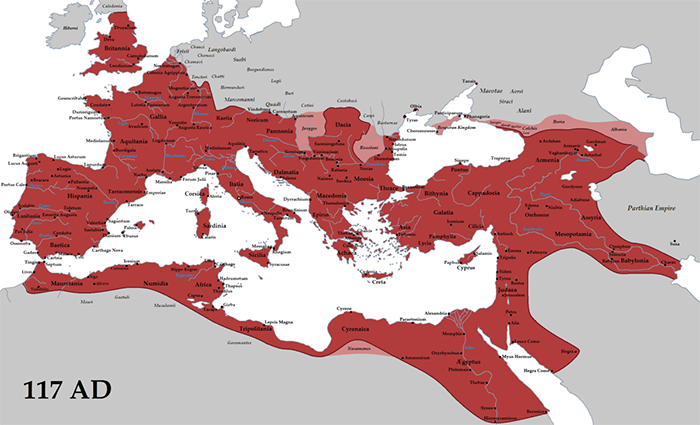The Pax Romana
The Pax Romana was a two-century period of relatively little unrest throughout the Roman Empire. 
Historians date the Pax Romana ("Roman Peace") as starting in 27 B.C.–when Augustus was still referred to by that name–and ending in A.D. 180, the year that the emperor Marcus Aurelius died. Some sources refer to this 206-year period as the Pax Augustus, in reference to the first Emperor. He is known to have ordered closed the Gates of Janus, a symbolic gesture that signified that peace was at hand. Peace was a relative term during this period: Roman armies still battled foes outside the realm; punctuating the period as well was some internecine strife, such as the Year of the Four Emperors. Some emperors, such as Caligula and Nero caused great strife within the Empire through their decadent and destructive behavior. By and large, however, compared to the vicious civil war that had plagued Rome just before Octavian's ascendance to the Principate, the Pax Romana was, for the most part, peaceful. Rome didn't necessarily trust its neighbors to keep the peace, however. Roman legions were stationed on the frontiers and in certain "hot zones" that had seen much conflict and strife in years past. Augustus established a kind of police force for the City of Rome. Protecting him and his successors was the Praetorian Guard. 
Because of this relative stability in Rome and elsewhere in the Empire, the Romans had the freedom to build and rebuild. New roads stretched to the farther reaches of the Empire. New temples and aqueducts sprang up, as did the vital port city Ostia, established by Claudius. Among the most famous new structures in Rome proper was the Colosseum, more properly the Flavian Amphitheater, begun by Vespasian and completed by his son, Titus. Perhaps the most famous structure at the edges of the Empire was Hadrian's Wall, which stretched the length of northern England. The lack of warfare during much of this time freed Rome's ships to carry goods far and wide. Trade flourished, as did the economy. Many business owners got very rich, and some shared their spoils with their workers in the form of salary increases. The population swelled to 70 million. It was also during this time that the Roman Empire reached its largest amount of land area. This occurred in 117, during the reign of the emperor Trajan.  |
Social Studies for Kids
copyright 2002–2025
David White




